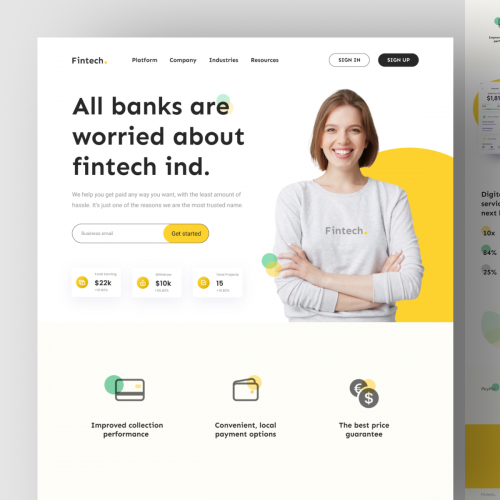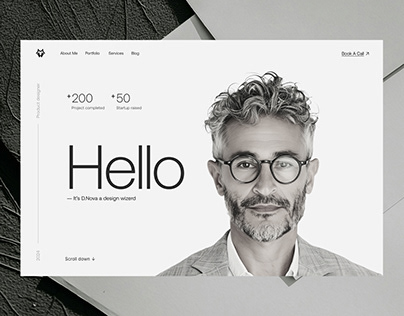Leading Tips for Creating an Impactful Site Design That Converts
To attain this, one should consider a selection of elements, consisting of recognizing the target audience, prioritizing user experience, and optimizing for mobile systems. The critical use of compelling call-to-actions and a distinct visual pecking order plays a vital role in directing individuals via their trip.

Understand Your Target Audience
Comprehending your target audience is fundamental to reliable internet site design, as it prepares for developing an engaging customer experience. Recognizing that your customers are, including their demographics, preferences, and habits, makes it possible for designers to customize the website's content, layout, and capability to fulfill details demands.
Carrying out thorough market research study is important in this procedure. Surveys, interviews, and analytics can supply beneficial understandings right into individual expectations and pain factors. By compiling this information, developers can create individual personalities that stand for various sections of the audience, ensuring that style decisions are notified and appropriate.
Moreover, understanding the target market assists in selecting appropriate style elements such as color design, typography, and images that reverberate with users. A web site that talks directly to its audience fosters a feeling of connection and trust, encouraging longer sees and greater conversion prices.
Eventually, a user-centered approach to internet site style not just enhances individual contentment but also sustains company goals by driving involvement and loyalty. By focusing on the needs and preferences of the target audience, a site can successfully serve its objective and attain wanted end results.
Prioritize User Experience
To improve the general effectiveness of a web site, focusing on user experience (UX) is crucial (Website Design). A well-designed UX ensures that visitors can browse the website effortlessly, find info quickly, and engage with material meaningfully. This leads to boosted customer contentment and greater conversion rates
Begin by applying instinctive navigation. Menus needs to be realistically structured, allowing users to situate essential areas of the site with minimal effort. Consistency in design components, such as color pattern and fonts, promotes familiarity, which is important for maintaining individual involvement.
In addition, consider the loading speed of your website. A delay of simply a few secs can lead to considerable drop-offs, as customers are much less most likely to wait on a slow-loading page. Enhancing pictures and enhancing code can improve performance and maintain visitors.
By focusing on user experience, you not only create a more pleasurable setting for visitors yet likewise enhance your brand name's integrity. Inevitably, a focus on UX is an investment in the long-term success of your website.
Enhance for Mobile Gadgets
Enhancing for mobile phones is essential in today's electronic landscape, where a boosting number of users accessibility sites via smart devices and tablets. A mobile-friendly style not only enhances user experience yet additionally plays a considerable function in boosting internet search engine rankings. To achieve this, it is necessary to take on a receptive style that automatically gets used to numerous display sizes and positionings.

Packing speed is an additional essential aspect; mobile users are commonly less person and anticipate fast accessibility to information. By prioritizing mobile optimization, you guarantee that your site stays competitive and efficiently involves a more comprehensive audience.
Use Compelling Call-to-Actions
An internet site's efficiency typically depends upon its capability to lead site visitors toward preferred actions, making engaging call-to-actions (CTAs) important elements of layout. CTAs offer as the essential factors that guide customers to engage with the site, whether that suggests making an acquisition, signing up for an e-newsletter, or downloading a resource.
To develop efficient CTAs, quality is extremely important. Usage succinct language that clearly communicates the activity you want the user to take.
Furthermore, the style of CTAs must stick out without being obtrusive. Use contrasting shades and clear font styles to guarantee they record interest. In addition, think about making use of directional cues, such as arrows or pictures, to assist customers toward these switches. By concentrating on these aspects, companies can significantly enhance customer involvement, driving conversions and eventually accomplishing their internet site's objectives.
Concentrate On Visual Hierarchy
Reliable web site layout relies heavily on a well-structured visual pecking order that guides customers with web content effortlessly. By arranging components in a fashion that prioritizes info, designers can enhance customer experience and assist in decision-making. This involves utilizing size, shade, comparison, and spacing purposefully to draw interest to one of the most crucial components of a web page.
Making use of larger typefaces for headings and subheadings develops a clear distinction between different areas, permitting users to check material effortlessly. Additionally, using different shades for switches and calls-to-action can catch individual attention and motivate interaction. Whitespace is an additional important part; it avoids clutter and enables customers to informative post concentrate on crucial messages without distractions.
Images and graphics must enhance the text while likewise sticking to the recognized hierarchy, enhancing the total message view (Website Design). Uniformity in design elements, such as shade schemes and typography, additional strengthens the aesthetic pecking order, making navigation intuitive

Final Thought
In final thought, effective site layout requires an extensive understanding of the target audience, prioritization of user experience, and mobile optimization. The strategic use compelling call-to-actions and a distinct aesthetic pecking order additionally improves individual engagement. By implementing these concepts, web sites can attain greater conversion rates, ensuring that design components not only attract visitors but additionally assist in smooth navigating and communication. Inevitably, a well-executed website design works as a critical part in driving customer actions and accomplishing service purposes.